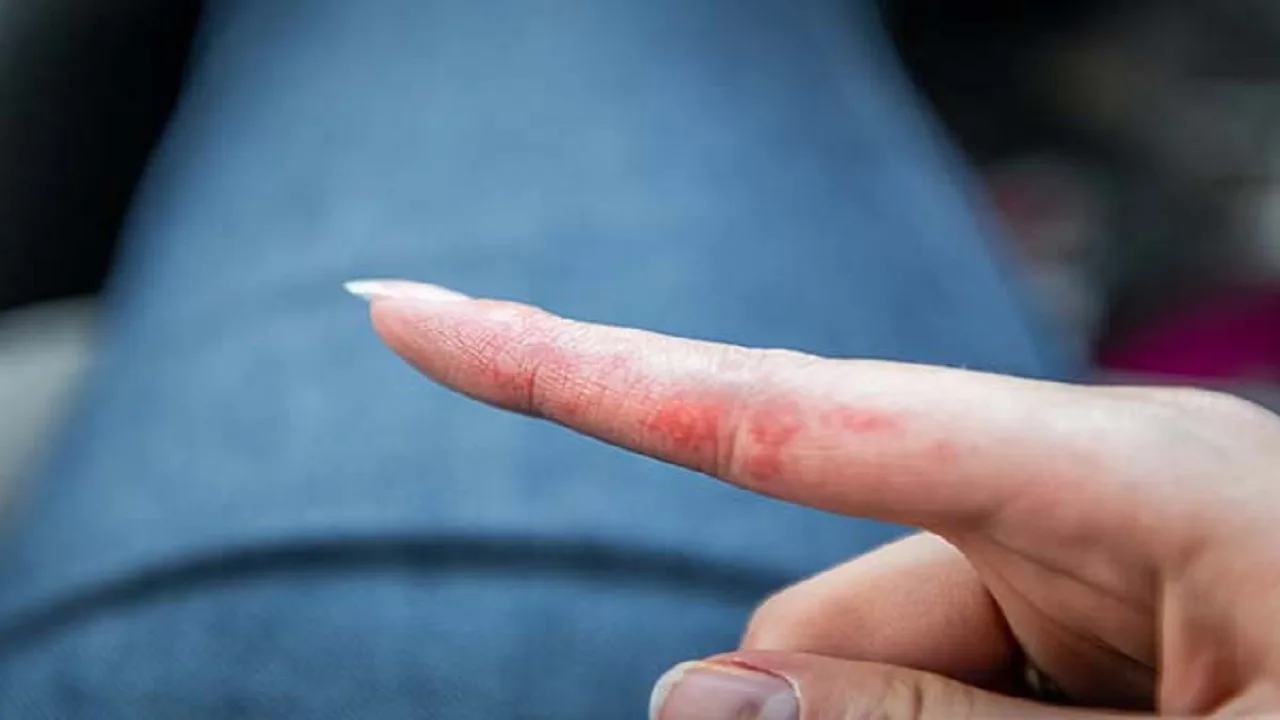As our largest organ, the skin has an important protective function. It is therefore equipped with a protective film that protects against substances and germs from the outside, but also allows the body’s own substances (such as sweat) to escape. This complex hydrolipid film forms a delicate balance of lipids and moisture. If the water content in the skin falls below 10%, the skin is referred to as dry.
Dry skin means that there is not enough moisture in the epidermis – the outermost layer of the skin. But one of the main causes4 of dry skin is impaired epidermal differentiation. Impaired epidermal differentiation means that the normal “maturation” of keratinocytes (horn-forming cells) in the epidermis (top layer of skin) from the lowest layer to the top layer, the stratum corneum, is disrupted.
The six most common characteristics of dry skin:
- Increased scaling and itching
- Increased water loss through the skin surface
- loss of naturally occurring moisture reserves
- Mild subclinical inflammation
- Disturbed epidermal differentiation
- Impaired barrier function of the skin 5
Without proper care and trying to address the causes of dry skin, the problem will keep coming back and can even get worse. That’s why it’s important to know that dry skin is a cycle that needs to be broken.
Dry Skin – Symptoms
While the general symptoms and signs of dry skin are the same, the severity can be influenced by factors such as age 2 , genetics, health, diet and lifestyle. To identify dry skin, look for the following signs 5 :
- Dry skin
- Increased flaking and irritation
- Feeling of tension in the skin (especially after swimming or bathing)
- Rough and flaky skin
- Fine lines or cracks
- Red spots
- Gray, ashen skin
Dry skin – home remedies complement daily care
Completely natural and healthy – using home remedies for dry skin has a long tradition: Cleopatra was already familiar with milk baths, curd masks and nourishing oils.
Supplement to daily care: Home remedies for dry skin
Especially in winter, many women – but also men – complain about a recurring problem: the skin is tight and itchy, becomes rough, reddish or even flaky. In most cases, these complaints have a common cause: the skin is too dry. If the natural balance of lipids and moisture in the outer layers of the skin is disturbed, the skin’s protective function is also weakened. You can bring dry skin back to a healthy state with home remedies of natural origin and high-quality care products.
Proper care for dry skin – home remedies as moisturizers?
The remarkable thing about the protective film on the skin is that it is not composed the same in all parts of the body and certainly not in all people. This is why dry skin can not only appear differently, but also have different needs. Some sufferers lack moisture factors, while other skin types have a high need for lipids. Anyone who wants to use home remedies for dry skin needs to know exactly what the skin is lacking.
Dry skin – home remedies relieve symptoms
Full baths can have a very beneficial effect on dry skin if they are composed correctly. A good example: Cleopatra’s milk bath! To do this, add 1 litre of whole milk, around 200 ml of olive oil and, if you have it on hand, 200 ml of carrot juice to the not too hot bath water. Highly concentrated vitamins and high-quality oils provide optimal care for the skin.
Put together your own facial care: masks made from food
Facial skin is particularly demanding because it is often stressed by environmental influences. Two natural masks are generally recommended:
- Quark mask: 1 tablespoon quark, 1 teaspoon honey, 1 teaspoon cream – 10-15 minutes exposure time
- Oatmeal mask: 2 tablespoons of oatmeal, some boiling water – leave to steep for 5 minutes, then leave to work for 10 minutes
It is important that the masks are always removed thoroughly afterward if the skin is dry. Otherwise, residues can harden and dry.
